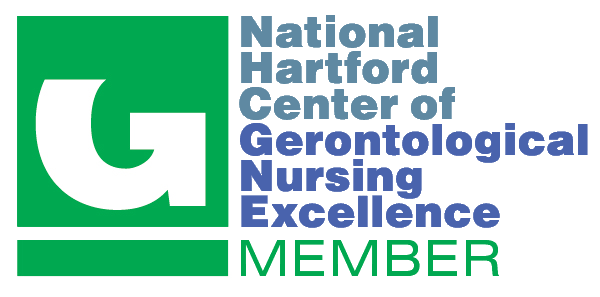Research Poster Tips
These tips are provided by the Center for Research Development and Scholarship (CRDS) and the FNIC Informatics Graphics Department. Should you need assistance with development of a research poster please contact VUSN-Development@vanderbilt.edu for a team member who can assist.
Research Poster Best Practices
WHAT IS MY MESSAGE?
- You must be able to state your main point(s) succinctly
- All visuals and text should relate to those points
- Abstract can serve as an outline for your poster, i.e., an illustrated abstract
- Determine specific size requirements; how things will be organized/displayed: on easels, on corkboard with pushpins, tri-fold board displayed on table, etc.
CREATING YOUR POSTER
- Place key sections - objectives, results, etc.
- Balance the placement of text and graphics
- Use white space creatively to define flow of information
- Don't fight "reader gravity" that pulls eye from top to bottom, left to right (Wheildon 1995).
GRAPHICS
- Graphs communicate relationships quickly
- Graphs should be simple and clean
- Stick to simple 2-D line graphs, bar charts, and pie charts
- Follow text guidelines for graphs
- Use photos that help deliver your message. If a photo doesn’t deliver a message don’t use it
- Use graphics minimally to attract attention
TEXT
- Minimize text - use easy to interpret visual graphics instead
- Keep text elements to 50 words or less.
- Use phrases (rather than full sentences)
- Use advanced organization
- Don't make fonts too large or too small. A general guideline for large research posters (4' x 8'):
— Headline font size: 80-150 pts
— Sub-Headline font size: 56-72 pts
— Body font size: 32-36 pts
COLORS
- Use a light color background - dark letters for contrast
- Avoid dark backgrounds with light letters in a large area
- Stick to a theme of 2-3 colors
SOFTWARE TOOLS
- Microsoft Office PowerPoint — recommended
- Microsoft Office Excel — Easily create tablular data and charts that can be easily exported into Microsoft Office Powerpoint
- Adobe InDesign — professional page layout software
- Adobe Illustrator — professional illustration and graphics software
NOTE: Microsoft Publisher is NOT recommended if you plan to have your poster created/printed with the VUSN Frist Informatics Graphics Department.
EDIT & EVALUATE
- Edit to reduce text
- If it is not relevant to your message, remove it. Remember: If in doubt, leave it out
- Ask colleagues for comment on drafts — invite them to critique
- Evaluate your work:
— Are your objective and main message obvious? - Leave time for friendly review and editing
HANDOUTS/CONTACT INFORMATION
- Determine if handouts are allowed: prepare per conference guidelines
- Plan where you will place contact cards/business cards for people who wish to talk with you at a later time
MISCELLANEOUS
- Bring sturdy, clear push pins. These are often not provided. Miscellaneous colored pins detract from the professional quality of your poster
- Check current airline rules regarding the handling of your poster as luggage, or check rules regarding conference poster shipment guidelines. Most poster carriers will not meet carry on restrictions
- If appropriate to the conference, bring additional VUSN program materials. As you stand near your poster, you may be asked for these
- Wear comfortable shoes
- Look upon the experience as one of the most pleasant, low pressure ways to present your work and meet colleagues who may further your work
3 IMPORTANT POINTS TO REMEMBER
An effective poster is:
- Focused on a single message
- Use of easy to interpret visual graphics will help tell the story and uses less text
- Keep the sequence well-ordered and obvious
Poster Templates and Graphic Design Resources
- http://onlinelibrary.wiley.com/doi/10.1111/j.1745-7599.2012.00790.x/epdf [PDF]
- http://colinpurrington.com/tips/poster-design
- http://justinlmatthews.com/posterhelp/posterguide
- http://research.lib.buffalo.edu/poster-presentations
- www.makesigns.com/tutorials/scientific-poster-parts
- www.makesigns.com/tutorials
- http://downloads.graphicsland.com/periodic.jpg [JPG]
- www.organizingcreativity.com/2012/04/conference-posters
- http://betterposters.blogspot.com
- Choosing the right graphs: http://colinpurrington.com/tips/figures
- Accommodating online readers: www.write.com/writing-guides/writing-for-the-web/writing-online-content-visually-sentences-paragraphs-and-chunking-information
- Creative Commons: http://search.creativecommons.org
- Wikimedia Commons: http://commons.wikimedia.org/wiki/Main_Page
- CDC Public Health Image Library: http://phil.cdc.gov/phil/home.asp
- National Cancer Institute: https://visualsonline.cancer.gov
- U.S. Government Photos & Images: www.usa.gov/Topics/Graphics.shtml
- U.S. Government Flickr Photo Streams: www.flickr.com/groups/usagov/
- USDA/ARS: www.ars.usda.gov/News/docs.htm?docid=23559
- U.S. Fish & Wildlife Digital Library: http://digitalmedia.fws.gov
- Flikr: www.flickr.com/search/advanced/?q=
In the upper left-hand corner pull down menu labeledAny Licenseand selectU.S. Government Workswhich are free for public use. - Free Images (requires a free account login): www.freeimages.com
- Stock Vault: www.stockvault.net
- Pixabay: https://pixabay.com
Copyright Links:




